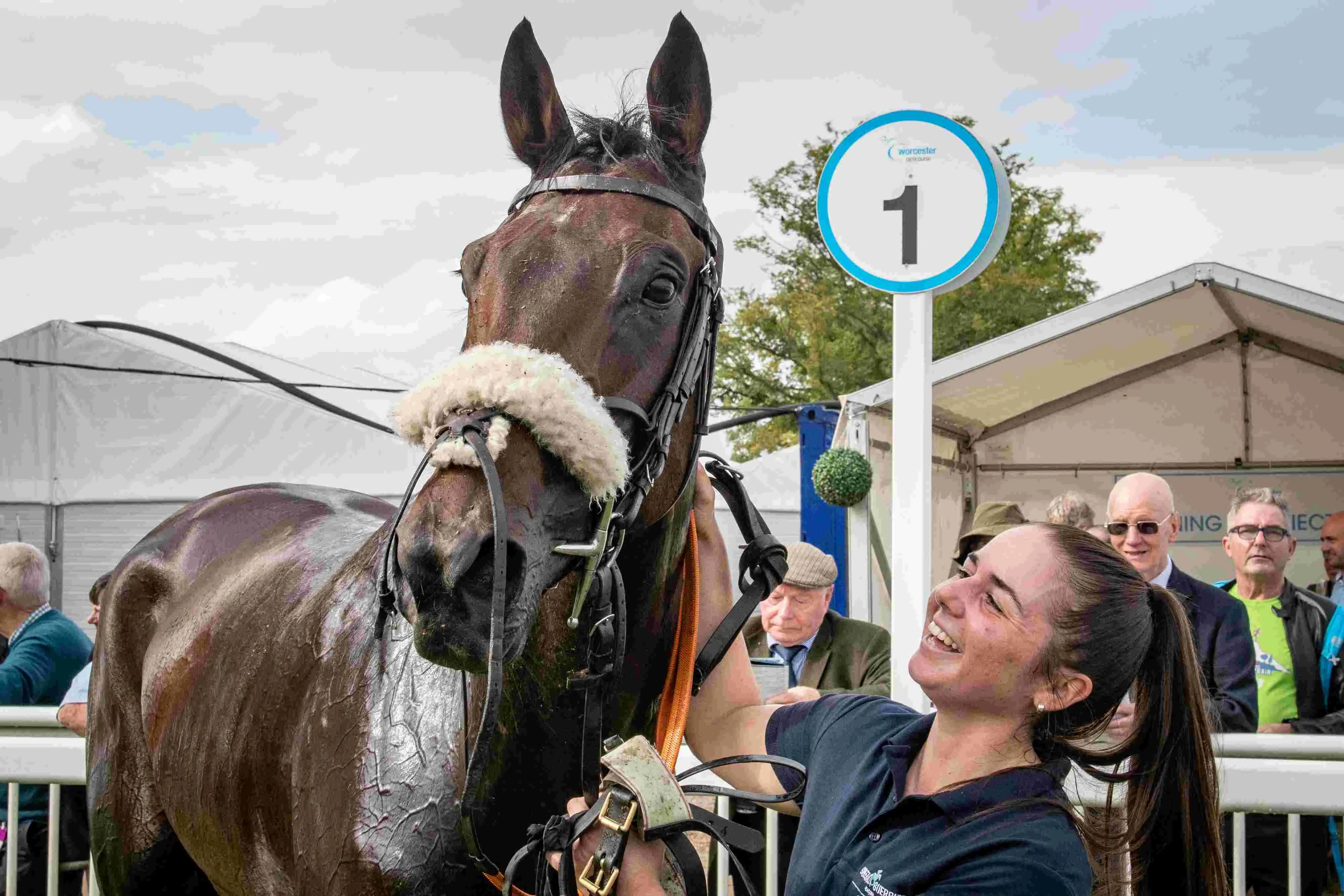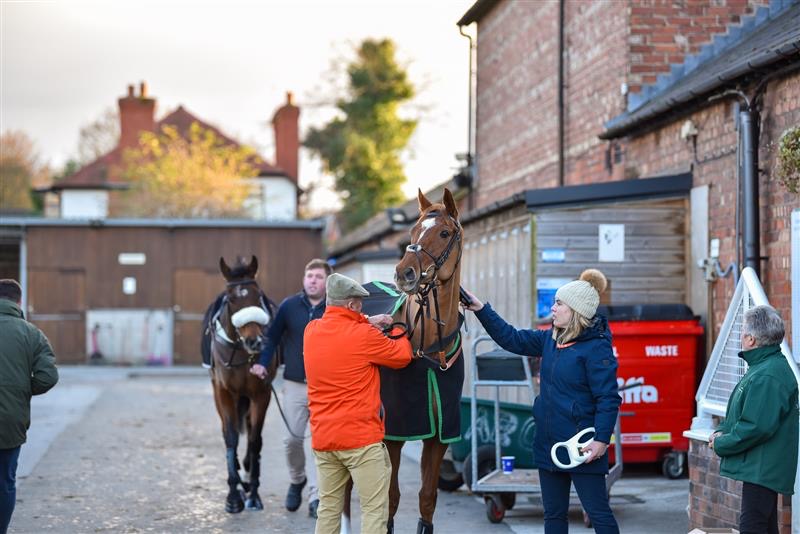PREPARING A RACEHORSE FOR RACE DAY
Ever wondered what goes into preparing a racehorse for race day? Behind every runner is an expert team of professionals, covering every aspect of their care and preparation for the big day.

48 hours before
After entering a horse for a race, a trainer must ‘declare’ them 48 hours before race day. This signifies that they intend to run the horse in a chosen race. A horse will only be declared if a trainer is happy with their preparation and believes they are physically and mentally in peak condition in the days leading up to the race itself.
24 hours before
For most horses, the day before a race seems much like any other with routine exercise ridden by their groom – the person who knows them best. This is a chance to stretch their legs without overly exerting themselves, as well as to ensure the horse is still in peak condition and ready to race.
The travelling head lad or lass – the person responsible for the horse’s care and transport on race day – will begin methodically packing the necessary equipment, from tack, to feed, water, and essential supplies. The home vet will give the horse a final check over, and the yard farrier will swap the horse’s normal steel training shoes for temporary 'racing plates' made of very light aluminium. Each horse follows a bespoke training plan tailored to them, and other preparations could include physiotherapy to stretch and prepare muscles, chiropractic treatment to mobilise joints, or a walk in the water spa to best prepare them for their race.
The morning of the race
Race day begins early. Horses are only permitted to be given normal food and water, and no other substances. This helps ensure that horses race without any substances in their system which might affect them. The travelling team get to work preparing the horse for safe travel, which begins by checking a horse is fit and well. From bandaging its legs and plaiting the tail to avoid any snags, preparation is vital to ensure horses are well protected and arrive at the course fit and well.
Travelling to the race
Racehorses travel in specially designed horse transporters in a range of sizes. Horse transporters are required by law to have a CCTV system, allowing the travelling team to monitor the horses at all times throughout the journey. Transporters are specially insulated against sound and allow lots of ventilation, to ensure quiet and comfortable travel. If a longer travel time is required, the travelling team will make stops to provide hay and offer water. Interestingly, many horses prefer to travel backwards or on an angle, which allows them to adopt a more natural stance and balance more effectively.

Arriving at the racecourse
Once they have arrived, a multitude of individuals become an integral part of the horse’s care for the day. From Equine Welfare Integrity Officers (EWIOs), BHA Veterinary Officers and Racecourse Veterinary Surgeons, to racecourse ground staff and travelling grooms, this matrix team work together to ensure the welfare of all equine athletes on course.
Enhanced pre-race examinations are becoming increasingly common at racecourses. 316 race days are scheduled for these enhanced checks in 2025 and will continue to increase as part of British racing’s commitment to reduce all avoidable risk and improve safety for its equine athletes.
As part of these pre-race checks horses are examined by a BHA Veterinary Officer to ensure they are in optimal condition and suitable to race. This involves a horse being 'trotted up' in front of a vet to determine any abnormalities in their movement that might make it less safe to race, feeling their front limbs for any signs of heat or swelling and listening to their heart to detect any signs of abnormality.

At the start line
Once a jockey is on board, they become responsible for the horse’s welfare during the race. Jockeys take this responsibility seriously and are subject to penalties if they breach the rules. At the start line, the starting team are specially trained to identify any last-minute issues and perform a series of final safety checks. Then it's time to race.
During the race
During the race, a convoy of vehicles follows the runners which includes veterinary surgeons and experienced horse handlers. Should a horse experience any kind of issue during the race vets attend to them within 60 seconds to offer any necessary treatment. All veterinary care, whether mild or major, takes place behind large green screens to ensure a calm and safe environment for the vet to work in and the horse being treated.
Should a horse require further assessment then specialist horse ambulances can transport them back to the first-class facilities in place at the racecourse stables. Where required, state-of-the-art fracture support kits, which use compression boots to stabilize a potential fracture, are available at every British racecourse to provide support, stability, reduced pain, and chance of rehabilitation for injured horses.
At the finish
Every horse receives the same care after the race regardless of their placing. Jockeys will dismount in the pull up area where a vet is present to address any immediate issues or areas of concern. Horses are then led back to the stables and given a thorough cool down and plenty of water. After their race some horses are taken to the sampling unit in order for a urine or blood sample to be taken. This is part of British racing’s strict anti-doping policy to ensure the sport is fair and horses are kept safe from banned substances. Racecourse vets are also on hand when leaving the racecourse stables to ensure horses are sound and fit to travel home.
Returning home
Once back at the yard, horses will be fed and given any recovery aids such as electrolytes to replenish salts lost through sweating, if needed. This is alongside their feed, fresh water, hay and a clean bed. They will have a well-earned day off the following day, with some light exercise or time on the horse walker or in the field to stretch their legs. For the travelling team, it’s time to prepare for tomorrow’s racing.
For more information on how British racing is reducing risk on the racecourse, click here.